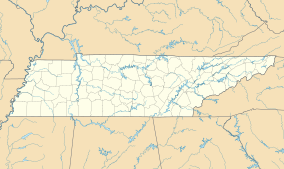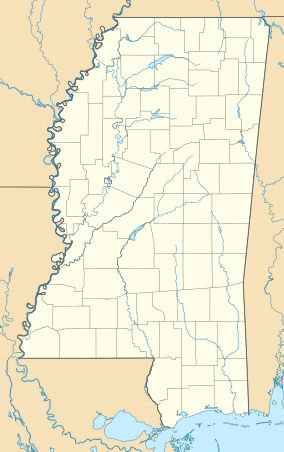Shiloh National Military Park facts for kids
Quick facts for kids Shiloh National Military Park |
|
|---|---|

Shiloh Church replica
|
|
| Location | Shiloh, Hardin County, Tennessee & Corinth, Mississippi, US |
| Nearest city | Savannah, Tennessee |
| Area | 9,324 acres (37.73 km2) |
| Established | December 27, 1894 |
| Visitors | 371,735 (in 2023) |
| Governing body | National Park Service |
| Website | Shiloh National Military Park |
| Shiloh National Battlefield | |
|---|---|
|
IUCN Category III (Natural Monument)
|
|
| Governing body | National Park Service |
Shiloh National Military Park helps us remember important battles from the American Civil War. It protects the battlefields of Shiloh and Corinth. The main part of the park is in Shiloh, Tennessee. This is about 9 miles (14 km) south of Savannah, Tennessee. Other parts of the park are in Corinth, Mississippi, and Parker's Crossroads Battlefield in Parkers Crossroads, Tennessee.
The Battle of Shiloh happened on April 6–7, 1862. This battle started a six-month fight for a very important railroad crossing in Corinth. After Shiloh, the Union forces marched to Corinth. They took the city in May. Later, the Confederate army tried to take it back in October, but they failed.
The park's visitor center has exhibits and films. You can also take a self-guided car tour to see the important spots.
Contents
Exploring the Shiloh Battlefield
The Battle of Shiloh was one of the first big battles in the western part of the American Civil War. It lasted for two days, on April 6 and 7, 1862. About 65,000 Union soldiers fought against 44,000 Confederate soldiers. Important leaders included Ulysses S. Grant and Don Carlos Buell for the Union. Albert Sidney Johnston and P.G.T. Beauregard led the Confederates. General Johnston was killed during the battle.
Nearly 24,000 soldiers were killed, wounded, or went missing. Neither side won a clear victory on the battlefield itself. The Union army stayed on the field, but they did not chase the retreating Confederates. However, it was a big loss for the Confederates in the overall war plan. After Shiloh, the Union forces were able to capture Corinth and its vital railroad junction.
The battlefield gets its name from the Shiloh Methodist Church. This was a small log church near Pittsburg Landing, Tennessee. Pittsburg Landing is where the Union soldiers arrived by boat for the battle. They sometimes called it "The Battle of Pittsburg Landing."
- Shiloh Military Park Landmarks
About Shiloh National Military Park
Shiloh National Military Park was created on December 27, 1894. It was first managed by the War Department. On August 10, 1933, the park became part of the National Park Service. This is the group that takes care of many national parks in the United States.
The park was added to the National Register of Historic Places on October 15, 1966. This list helps protect important historical sites. On September 22, 2000, areas related to the Corinth battlefield were also added to the park. These include sites from the First and Second Battles of Corinth. The Siege and Battle of Corinth Sites was named a National Historic Landmark on May 6, 1991.
What to See at the Visitor Center
The visitor center is a great place to start your visit. It has permanent exhibitions and films that tell the story of the battles. There are also displays to help you understand what happened. You can take a self-guided 12-mile (19 km) car tour. This tour stops at important places like the Peach Orchard, the Hornet's Nest, and where General Johnston died.
Shiloh National Cemetery
 Shiloh National Cemetery is located in the park's northeast corner. It is right next to the visitor center. This cemetery is the final resting place for 3,584 Union soldiers. Many of these soldiers, 2,357 of them, are unknown. They were buried here after the war, in 1866. Only two Confederate soldiers are buried in this cemetery. Many other Confederate soldiers are buried in unmarked mass graves throughout the park. The National Park Service has managed the cemetery since 1933.
Shiloh National Cemetery is located in the park's northeast corner. It is right next to the visitor center. This cemetery is the final resting place for 3,584 Union soldiers. Many of these soldiers, 2,357 of them, are unknown. They were buried here after the war, in 1866. Only two Confederate soldiers are buried in this cemetery. Many other Confederate soldiers are buried in unmarked mass graves throughout the park. The National Park Service has managed the cemetery since 1933.
Shiloh Indian Mounds Site
Inside the Shiloh battlefield, you can also find the well-preserved Shiloh Indian Mounds Site. This is another National Historic Landmark. These ancient mounds show where people lived long ago. The site was home to people of the Early Mississippian period. They lived here from about the year 1000 to 1450.
See also
- Memphis and Charleston Railroad
- List of Mississippian sites









